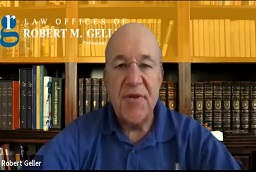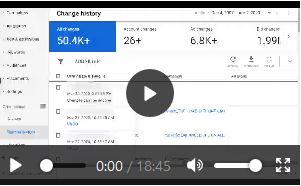
Natalia Wulfe
Table of Contents
The position of your PPC ad absolutely does matter.
Google and other search engines make money on each ad click. For this reason, a major signal in their ad serving algorithm is what Google calls “Expected Click Thru Rate.” To put it simply, if Google expects someone to click on your ad at a higher rate than your competitors’ ads, then Google expects to make more money. Your ad position matters because it’s one of several factors that Google considers when it evaluates your Expected CTR.
If your ad is at the top of the first page, typically, Google is going to expect a higher CTR on your ad. If your ad falls to page two of the SERP, Google isn’t expecting as high a click-thru rate. A higher Expected CTR rating can mean lower CPCs for you because Google is rewarding you for serving an ad that searchers want to click on and penalizing ads that searchers aren’t as likely to click on. Ad position and Expected CTR are a bit cyclical in that the higher your ad position, the better your Expected CTR. In turn, a higher Expected CTR can help you achieve a higher ad position at the same or lower CPC, which can lead to an even better Expected CTR rating.
There are other factors that impact Expected CTR, such as ad relevancy and query relevancy, but ad position is a critical component. Unfortunately, Google removed ad position data from their platform a couple of years ago, but advertisers can use impression share, impression percent, and click share metrics to understand the strength of their SERP placement relative to their competitors.
PPC ad position matters, but it’s just one ingredient in a successful campaign.
The number one position is better than the number two position, as higher positions have better click-through rates, but the cost to achieve that position is a metric that has to be considered. At the end of the day, ROI is the primary indicator of PPC performance. Since PPC follows an auction-based model, the cost to achieve a certain ad position can vary wildly. Assuming quality scores are the same, you only pay one cent more than the ad below you to achieve a position. This means if you bid $1.01 and your competitor bids $1.00, you will be in position one, and they will be in position two.
What ends up happening most of the time is the advertiser in the number one position is bidding $10, and the advertiser in the number two position is bidding $5. You can achieve the number one spot for $10.01 or the number two spot for $5.01. While the number one position has a better click-through rate and a few other benefits, you get twice the number of clicks with the number two position [for the same cost]. In this example, the question you need to ask is whether the traffic from the number one position is twice as good as the traffic from the number two position. Since the number one position costs twice as much, it needs to be twice as beneficial to be justified. You’ll need to regularly assess these types of equations and make adjustments to achieve the best ROI. Ad position matters, but ROI matters more.

John McGhee

Harpal Singh
Position matters, but it does depend on the layout of the search engine results page.
We’re seeing more and more that Google is experimenting with single ad configurations on mobile or, in particular, for transactional searches – for example, a text ad next to several shopping ads. Unless you’re in position one across these types of searches, your CTR will likely suffer, particularly if your ad is below-the-fold. For brand searches, this is particularly important, as the difference between P1 and P2 can be stark in CTR terms.
All that being said, for non-brand searches, the top position tends to be less important, and it may actually be in your interest to appear below position one. Across highly competitive search landscapes, we tend to see that users click on multiple ads in order to find the solution that best meets their needs. If you’re in P1 in this scenario, then there’s a possibility that you’ll be paying more than other advertisers, so you might want to target a lower position to save on click costs while maintaining click volume.

Need Google Ads Management Help?
Free Google Ads account review for
qualified clients
Almost 20 years experience
Top position outperform those farther down
Ads appearing higher up on the page, especially for Google Ads, outperform those farther down. The intuitive assumption is that people tend to click an ad in the first position more often than they would click any other ad position on a page. The raw data actually backs this up with up to an 8% CTR on first position ads compared to around a 2% CTR on others, which is what we have observed as well, with our position one ad far outperforming others.
The reason behind this [occurrence] is likely purely psychological. If something is first, it is prominent, and viewers are more inclined to associate the product or service with quality or authority. Additionally, ads further down the page are increasingly likely to be viewed after ad fatigue has already set in. If your ad is the first or among the first viewed, your CTR is going to be better just based on ad fatigue considerations alone.

Lacy Summers

Francisco Lacayo
Other factors could [lead to] more results
With the removal of the average ad position by Google and the constant push towards automated bidding, the short answer would be: no, ad position isn’t as relevant as it used to be. While being at the absolute top of the page still represents more visibility for advertisers, it doesn’t necessarily guarantee an improvement in performance. For instance, when relying on automation for your bidding strategy, both Google and Microsoft take hundreds of [aspects] into account to make the right bid. Ad position is only a fraction of what might determine the most efficient and successful bid for your keyword.
With the evolution of the search network, and the constant changes in consumer behavior, other factors could [lead to] more results for your business, even if it means sacrificing that top spot:
Bidding strategy: Using an automated bidding strategy will allow you to focus on your client’s goal rather than a position on the page. With time, you might realize that you perform best below the absolute top position, and this knowledge is something that can help you be a lot more efficient with your budget.
Ad copy quality: Is your ad copy catchy? Are you highlighting your unique selling points? Are you making use of all the resources available? Being in the top position and showing a weak ad will likely not get you the best results.
Ad extensions: This is the easiest way to increase your ad copy real estate and improve relevancy as well. The more extensions you use, the more likely you are to stand out at the top of the fold, even if you are not at the absolute top of the page.
Position of your ad has a huge impact
More than half of all buyers begin their product searches on search engines, and Google is a leader in this field. The position of your ad has a huge impact on the number of visitors to your site. Experts [have] learned that ads shown at the top of the search list receive up to 55% more views than ads at the bottom. If you are looking for customers, this is a very important number.
That’s not all. The ad position also affects the conversion rate – the ratio of people who left their contact details or subscribed to your newsletter after clicking on your ad. The average conversion rate is about 1%. Again, this figure is increased by about 50% when the ad is placed in one of the top positions.

Kyle Bachmann

Valentina Lopez
Your ad position doesn’t matter because placing first doesn’t always guarantee a better PPC.
Just like other elements in your campaign, your ad position plays an important role in your results. But you should remember that placing number one doesn’t always guarantee better conversion, visibility, traffic, and ROI. You might be bidding too much for the position and still get few clicks. You can place second, third, or lower and still get clicks and generate traffic.
You see, people will click more than one ad [before] they make a buying decision. So again, your ad position doesn’t matter if they attract your prospective customers.
This is a crowdsourced article. Contributors are not necessarily affiliated with this website and their statements do not necessarily reflect the opinion of this website, other people, businesses, or other contributors.



















